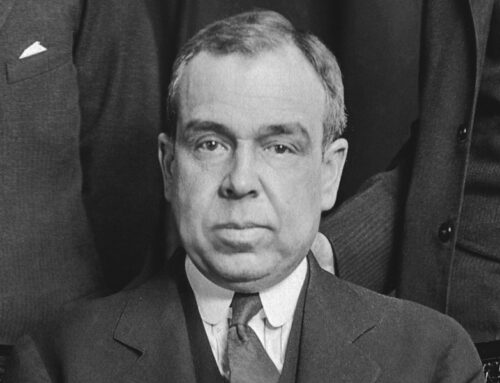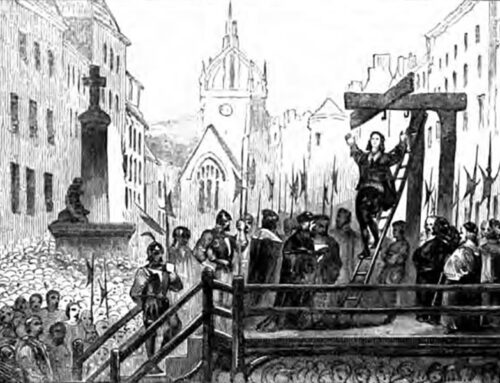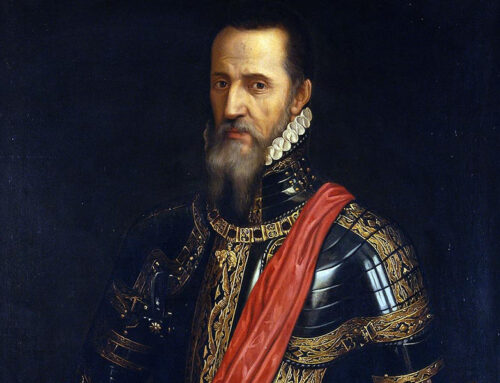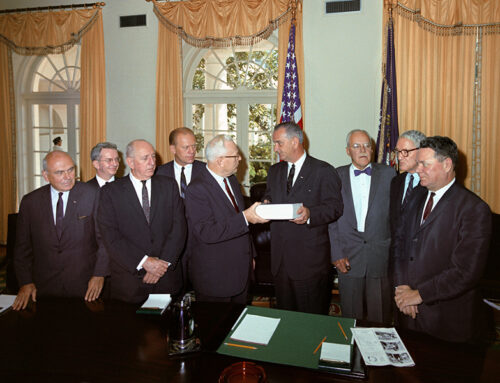

“And they burned the city with fire, and everything in it….” —Joshua 6:24a
Atomic Bomb Dropped on Hiroshima, August 6, 1945
![]() ertain events in history changed the world for all time. Gutenburg’s printing press in the 16th century revolutionized the publication of books and other printed material. The Wright Brothers ushered in the reality of motorized flight, which eventually resulted in walking on the moon, the space station, and war from the air. The use of an atomic weapon over a civilian-populated city brought about the nuclear age which defined political, technological, social, and foreign policy issues for the nations of the world. The remarkable story of the creation of nuclear weapons still seizes the imagination and divides those who study it, over morality and warfare.
ertain events in history changed the world for all time. Gutenburg’s printing press in the 16th century revolutionized the publication of books and other printed material. The Wright Brothers ushered in the reality of motorized flight, which eventually resulted in walking on the moon, the space station, and war from the air. The use of an atomic weapon over a civilian-populated city brought about the nuclear age which defined political, technological, social, and foreign policy issues for the nations of the world. The remarkable story of the creation of nuclear weapons still seizes the imagination and divides those who study it, over morality and warfare.
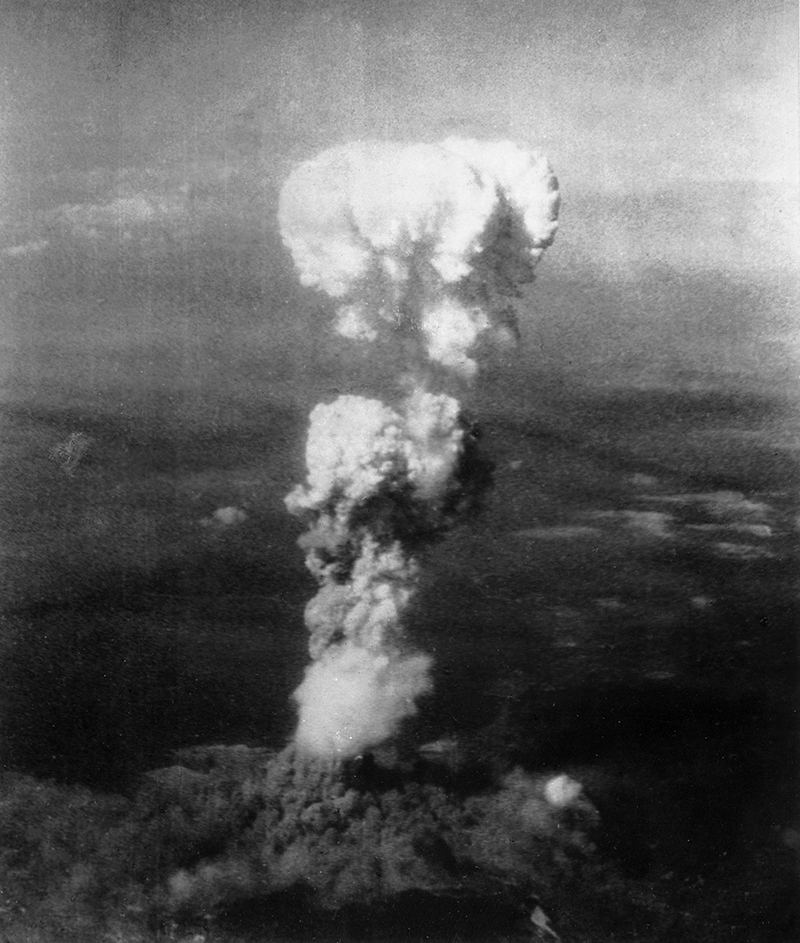
The atomic bomb mushroom cloud over Hiroshima, August 6, 1945
In the Second World War from June 1944 to June 1945, the United States suffered about one million casualties out of the 1.25 million total of the entire war. Germany had surrendered on May 7, but Japan fought on, seemingly to extinction. The American Joint Chiefs and their leader George Marshall struggled to find a means to force the Japanese to quit. The conflict that began April 1 on Okinawa—an island considered part of Japan by the emperor—was using up American troops at an unprecedented rate, and the Japanese were fighting to the last cartridge, making suicide attacks or just killing themselves in their caves.

The signing of the terms of surrender in Reims, Germany, May 7, 1945
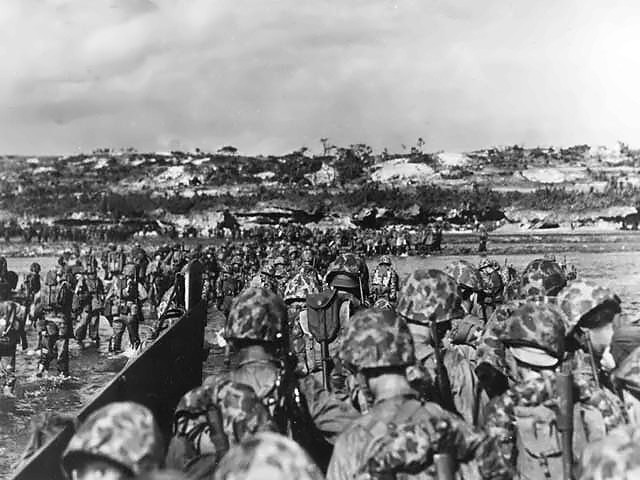
Landing of U.S. Marines on the shores of Okinawa, April 1, 1945
In the first six months of 1945, General Curtis LeMay sent B-29 bombers to destroy the industrial centers of Japan, culminating in the fire-bombing of Tokyo in March, which wiped out sixteen square miles of the city, killing more than 100,000 people, mostly civilians. By mid-June the six largest cities of Japan had been fire-bombed to ashes, causing the Japanese government to redouble its production efforts and recruit a citizen army of several million people to repel any invasion.

Tokyo burning under B-29 firebomb assault, May 26, 1945
At the end of 1942, President Franklin Roosevelt had authorized the Manhattan Project, the development of a bomb that could use the power of nuclear fission as a weapon of mass destruction. Led by theoretical physicist Robert Oppenheimer, the top secret project scientists raced to create a usable weapon before the Germans or Japanese developed their own nuclear program. Within two years the Los Alamos Laboratories in New Mexico produced two bombs.
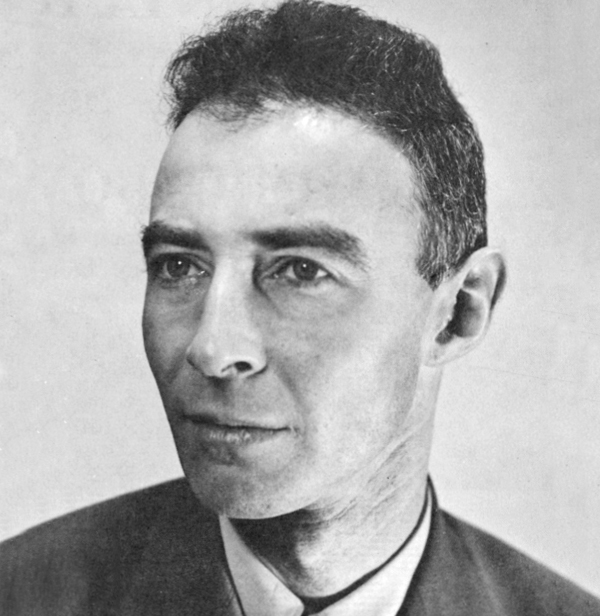
J. Robert Oppenheimer (1904-1967)
A special air command called the 509th Composite Group, commanded by Colonel Paul Warfield Tibbets, Jr. surreptitiously joined the more than 130,000 people working on the project, and prepared to deliver the atomic weapons over Germany or Japan. Germany surrendered before the atomic bombs could be used there, but Japan stubbornly refused to admit defeat as they prepared for an invasion of the homeland. In July, 1945, the weapon was successfully tested near Alamogordo, New Mexico, and the stage was set for the use of a weapon that could change history.
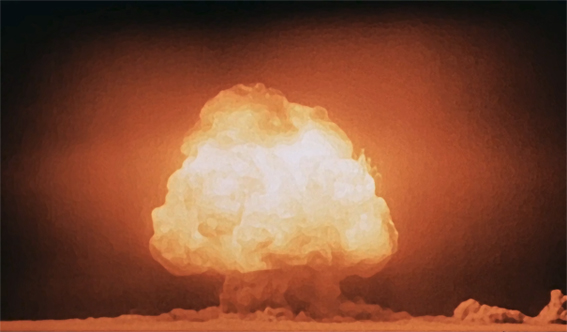
Part of the Manhattan Project, “Trinity” was the code name for the first detonation of a nuclear device, carried out on July 16, 1945 in New Mexico. The height of the mushroom cloud reached 7.5 miles, and the explosion was felt over 100 miles away.
The “targeting committee” chose five potential sites in Japan that had military significance but had not yet been badly attacked. At the Potsdam meeting of “the Big Three,” Truman once again reiterated the American requirement of the “unconditional surrender“ of Japan and warned of a new destruction about to descend on them if they did not come to terms. The Japanese insisted on keeping their emperor. After much debate and soul-searching, the President gave the order to deploy the first atomic bomb.

Mission runs of August 6 (Hiroshima) and August 9 (Nagasaki)
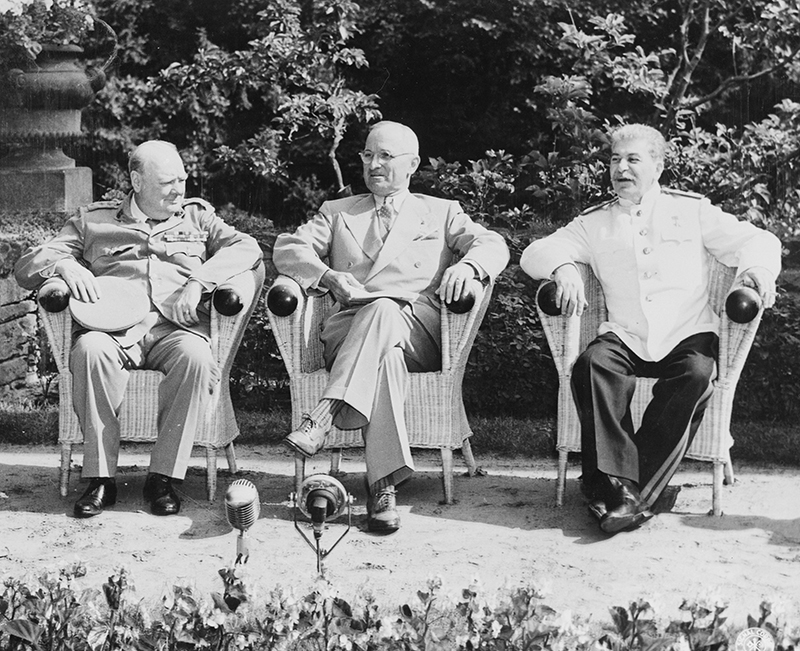
The “Big Three” at the Potsdam Conference (July 17 – August 2, 1945) in Potsdam, Germany, left to right: British Prime Minister Winston Churchill, U.S. President Harry S. Truman, and Soviet leader Josef Stalin
On August 6, Paul Tibbets in command of the B-29 Enola Gay, named after his mother, lifted off for the six-hour flight from Tinian Island to the City of Hiroshima, Japan. At 31,000 feet, the bomb, named “Little Boy,” was released and detonated at about 1,900 feet above the city. About 80,000 people were killed by the blast and the ensuing firestorm. Another 70,000 were injured, and many died in the following days. Ground zero was about a one-mile radius, and 4.4-mile burn zone. Warfare, foreign policy, and history were changed forever.
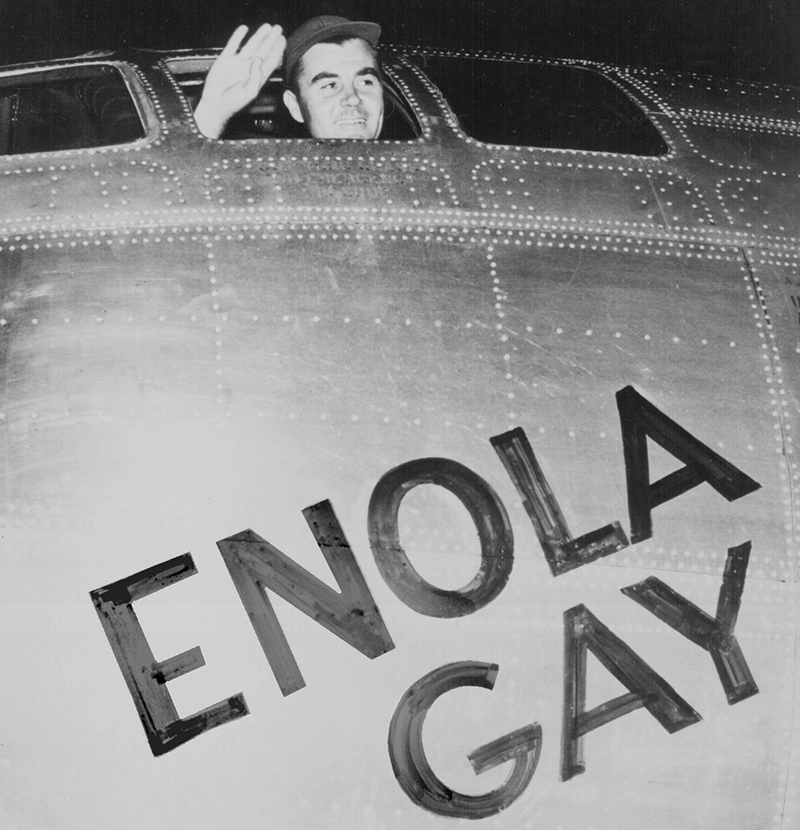
Paul Tibbets waves from the cockpit of the Enola Gay B-29 Superfortress before taking off for the bombing of Hiroshima
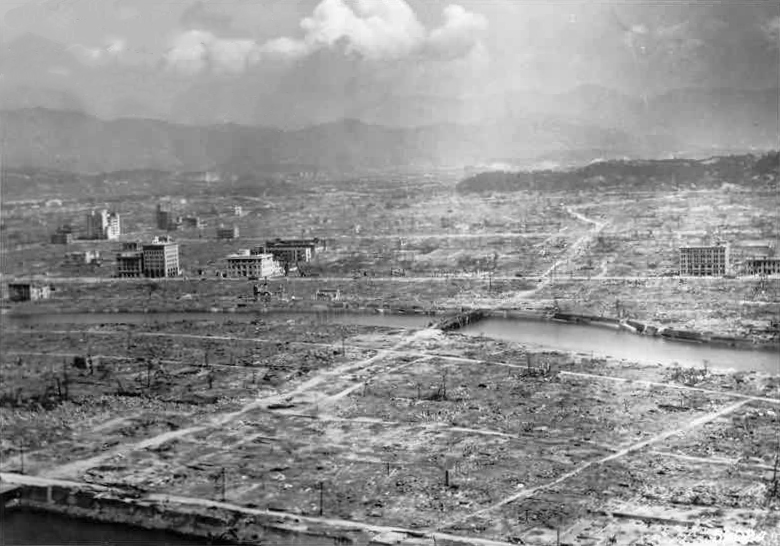
A view of Hiroshima in the aftermath of the bombing
Fierce debates have ensued ever since the bombing of Hiroshima, and Nagasaki several days later. Japan capitulated and got to keep their emperor after all. The United States occupied and rebuilt Japan, but the controversy over using nuclear weapons has never dissipated. Critics have argued that Japan was ready to surrender and the United States government ignored them. Others denied that an actual invasion would not have been necessary, so arguing that the bombing saved lives in the long run just confuses the issue. Many of the arguments supporting the use of nuclear weapons are based on the pragmatic view that a million American lives were preserved, not having to invade. Others suggest that nuclear weapons are just another weapon, with more power than the rest, and did not kill nearly as many as conventional fire-bombing.
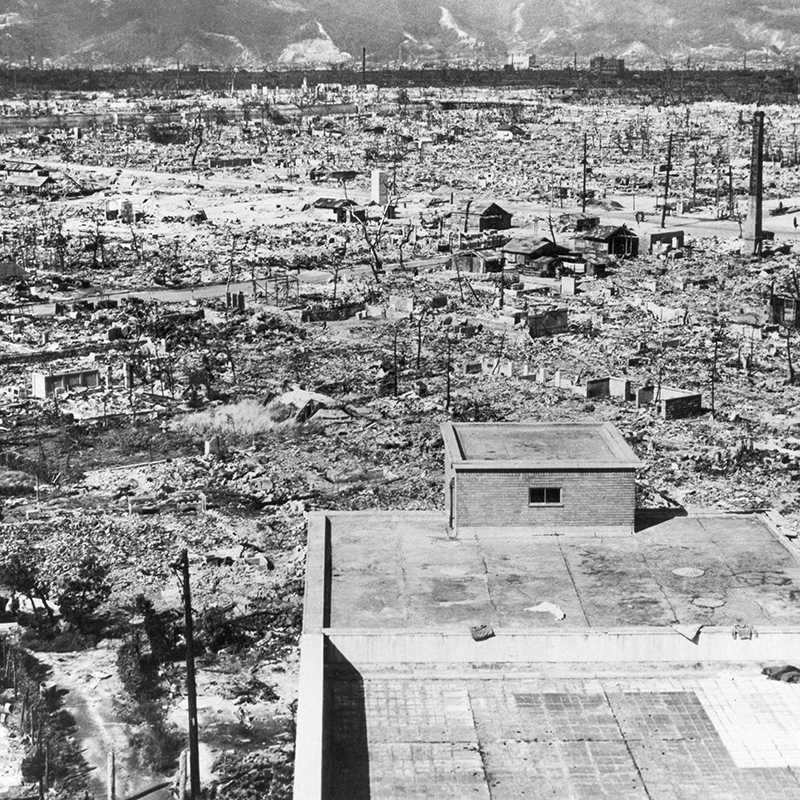
Hiroshima two months after the bombing
That comment hints at the basic question, did bombing from the air, whether conventional or nuclear, killing millions of non-combatant civilians, violate any biblical principles regarding warfare? The answer to that question touches on several biblical principles laid down in the Law of God regarding rules for warfare. When you throw in civilian slave-laborers working in war-related industries, the indiscriminate slaughter of non-combatants gets even stickier. If you ask a Second World War veteran if he is glad for the atomic bomb, odds are he will bless the day Hiroshima got destroyed and brought the Empire of Japan to its knees.
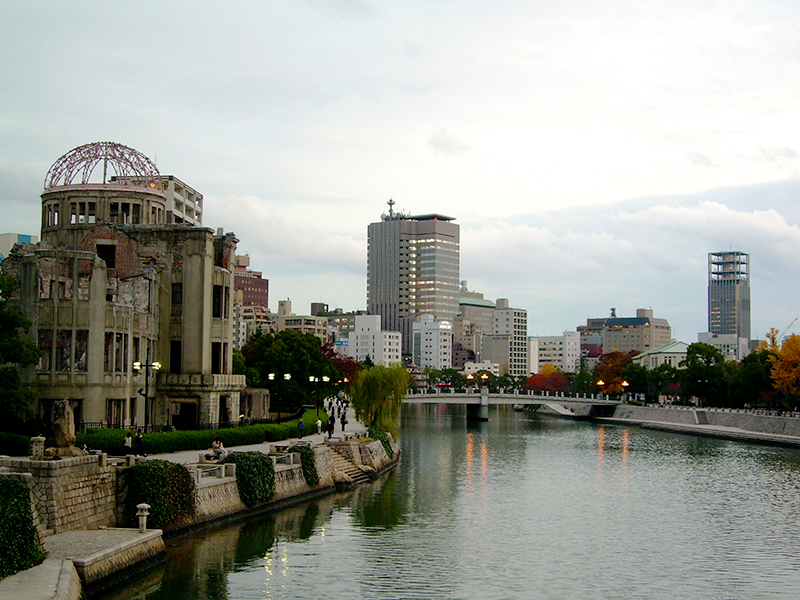
Ruins of the Hiroshima Prefectural Industrial Promotion Hall (left) now form part of the Hiroshima Peace Memorial
Image Credits: 1 Mushroom cloud over Hiroshima (Wikipedia.org) 2 German surrender in Reims (Wikipedia.org) 3 Okinawa landing (Wikipedia.org) 4 Tokyo firebombing (Wikipedia.org) 5 J. Robert Oppenheimer (Wikipedia.org) 6 Trinity Test (Wikipedia.org) 7 Mission map (Wikipedia.org) 8 Potsdam Big Three (Wikipedia.org) 9 Tibbets and the Enola Gay (Wikipedia.org) 10 Hiroshima aftermath 1 (Wikipedia.org) 11 Hiroshima aftermath 2 (Wikipedia.org) 12 Hiroshima Peace Memorial (Wikipedia.org)


